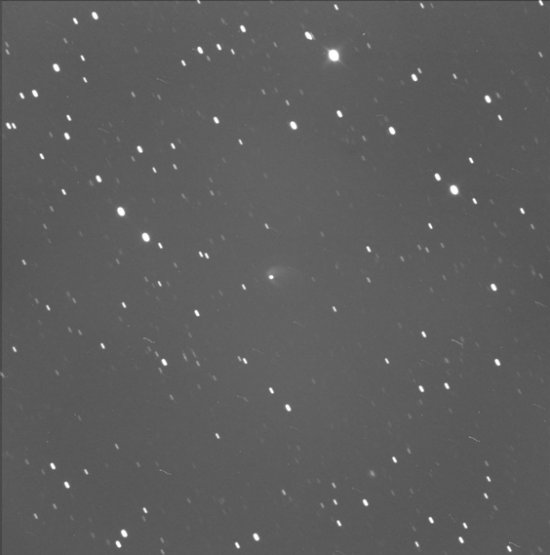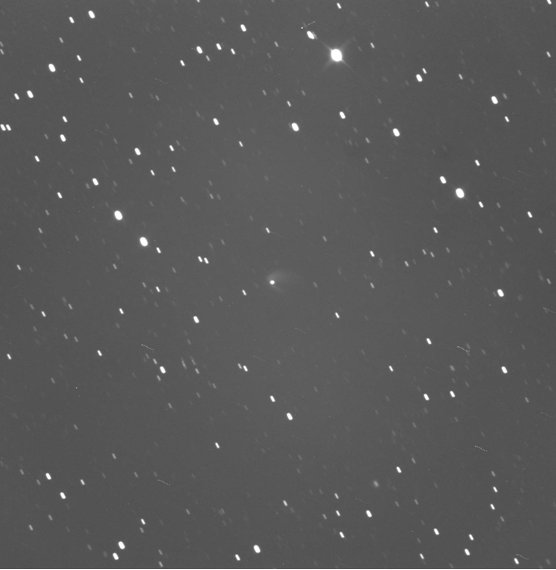Things are getting a little stranger in the asteroid belt these days! Objects in this zone of the solar system are known to be rocky bodies, though in the past few years several of these bodies have had cometary features detected. One such body is 596 Scheila, which has always been confidently called a main-belt asteroid, meaning it is a rocky body orbiting nicely between Mars and Jupiter causing no trouble to Earth.
Scheila is 113 km in diameter and was discovered in 1906 by August Kopff in Heidelberg and named after an acquaintance of the discoverer. For the past 104 years Scheila has been pleasantly orbiting without much fuss until last week the Catelina Sky Survey found a coma around the object with a 0.68 meter Schmidt telescope; quickly confirmed by many other observers.Scheila, along with several other bodies in the past few years, have created a new class of solar system objects: main-belt comets. Main-belt comets have the orbital characteristics of main-belt asteroids, but exhibit an outgassing, comae, or a dust-tail that is normally seen on icy comets that came from the outer-reaches of our solar system. These bodies are an anomaly and a mystery since an object this close to the sun should have had its ices vaporized away. This has caused another theory to arise that perhaps they are not icy bodies, but perhaps the trail of debris was caused by an asteroid-asteroid collision.
3200 Phaethon, the parent body of the famous Geminid meteor shower, is another example of this. Phaethon was always thought to be an asteroid, a purely rocky body, and even its meteoroids agreed with this, being denser than an average icy-meteoroid. But in recent times Phaethon has exhibited dust-outgassing, causing observers to wonder whether it once was a comet, or if it has had a recently collision to cause the particles.
Unlike Phaethon, Scheila will not intersect Earth’s orbit and thus we will not have a Scheilid meteor shower. Whether this outgassing and dust production from asteroids is due to vaporization of earth or asteroid collisions, only time will tell. Oh, the mysteries of our solar system!

Orbit of 596 Scheila, as computed by the JPL small-body database browser.

Image of 596 Scheila using a V Filter and 10 stacked images of three-minute exposures each.

Image of 596 Scheila using an R Filter and 10 stacked images of three- minute exposures each.
Images courtesy of Bill Cooke and Rhiannon Blaauw, NASA’s Meteoroid Environment Office, Marshall Space Flight Center, Huntsville, Ala.

Isn’t this just awesome!
How far is Scheila 596 from earth? How long would it take for a shuttle or rocket too reach it and return home to Earth with its payload of 5,000TONS OF GOLD OR SILVER?
the sun is becoming active so im guessing that the ice is just now beginning to melt
? on comet was25/07/2011 aprox. 2325est
I was recommended this blog by means of my cousin. I’m now not sure whether this put up is written by him as nobody else know such distinct approximately my trouble. You’re wonderful! Thank you! http://theme-astral-gratuit.net